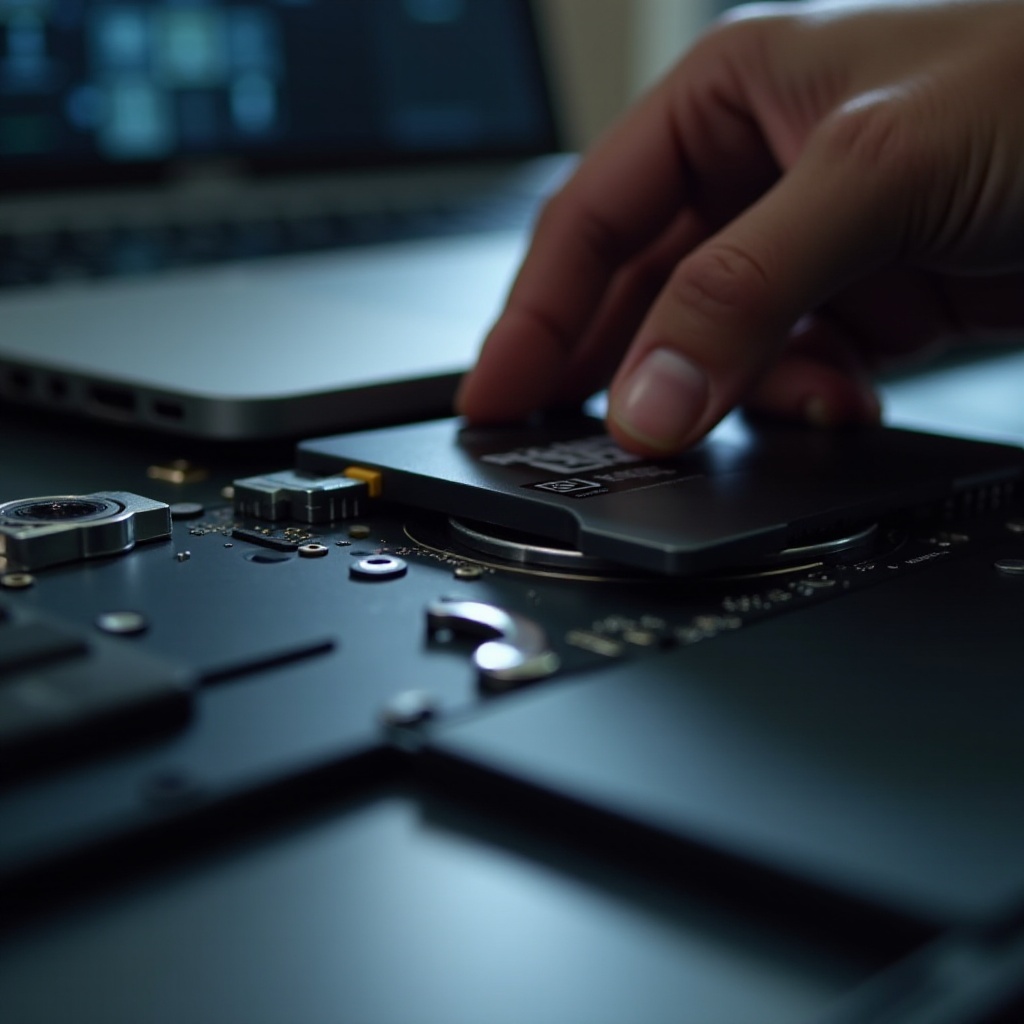How to Upgrade Your Laptop’s SSD in 2024
Introduction
Enhancing your laptop’s capabilities starts with upgrading to a solid-state drive (SSD). With technological advancements, replacing an old hard drive is now simpler, bringing notable improvements in speed and storage. If your laptop is slowing down due to age, an SSD can breathe new life into it by offering faster operation and larger storage capability. This comprehensive guide aims to walk you through the process of upgrading your laptop’s SSD, ensuring a smooth and successful transition. From understanding different SSD types to installing and optimizing your new SSD, we’ll cover all the essentials. By the end of this guide, you’ll be ready to upgrade your laptop’s SSD in 2024 efficiently.

Why Upgrade to an SSD?
Opting for an SSD over a traditional hard disk drive (HDD) brings several benefits that users can’t ignore. First and foremost, SSDs are known for their exceptional speed in data access and retrieval, leading to faster boot times and seamless file transfers. Tasks that are demanding, or involve frequent multitasking, particularly benefit from the responsiveness that SSDs offer.
In addition to speed, SSDs are also more reliable. Unlike HDDs, SSDs have no moving parts, which significantly lowers the risk of mechanical failures. This reliability translates to a longer lifespan and better energy efficiency, enhancing your laptop’s battery performance. With the cost of SSDs now more accessible than ever, upgrading becomes not only wise but also economically feasible. Whether your laptop is for professional tasks, studying, or entertainment, upgrading to an SSD elevates your computing experience dramatically.
Understanding SSD Types and Compatibility
When choosing an SSD, it’s critical to know the types available and ensure they are compatible with your laptop.
SATA vs. NVMe SSDs
SSDs mainly come in two types: SATA and NVMe. SATA SSDs, the older technology, remain popular due to their affordability and ability to markedly enhance performance over HDDs. Conversely, NVMe SSDs utilize faster PCIe connections and offer superior speeds, catering to users who demand peak performance levels, such as gamers or content creators.
Checking Laptop Compatibility
Compatibility is key when purchasing an SSD for your laptop. It’s essential to consult your laptop’s manual or the manufacturer’s website to understand the supported drive types. Consider factors like form factor and interface; common choices include the 2.5-inch SSD or the M.2 form factor. Ensuring compatibility helps avoid the hassle of exchanges or returns, making your upgrade process smooth.
Essential Tools and Preparations
Before embarking on your SSD upgrade, gather all necessary tools:
- Screwdriver set: A precision set with various bit sizes.
- Anti-static wristband: To protect components from static damage.
- SSD cloning software: If cloning your old drive.
- External storage or cloud service: For backing up data.
Equipping yourself with these tools and knowledge ensures you complete the upgrade confidently and without any rush.

Backing Up Your Data
Backing up data is a crucial step before removing the old drive. Utilize an external storage device or a cloud service to secure important files, documents, and photos. This backup step safeguards against data loss during the SSD swap, allowing for hassle-free data recovery and transfer post-installation.
Step-by-Step Guide to SSD Installation
Safely Removing the Old Drive
- Shut down your laptop and disconnect peripherals.
- If applicable, remove the battery to eliminate power risk.
- Open the laptop case or access the drive-specific panel using your screwdriver.
- Carefully disconnect the old drive from its connections.
- Remove the old HDD or SSD from its slot.
Installing the New SSD
- Securely insert the new SSD into the designated slot.
- Connect it to the correct SATA or NVMe interface.
- Carefully reassemble the casing or panel using screws.
- Reinsert the battery and peripherals previously removed.
With your new SSD installed, follow the next steps to set it up for operation.
Setting Up the New SSD
Partitioning and Formatting
Boot your laptop via the BIOS menu using a USB or installation disk. Follow the instructions to partition and format your new SSD, getting it ready for the operating system.
Installing or Migrating the Operating System
For a clean slate, insert your OS installation media and proceed with a fresh install. Alternatively, use SSD cloning software to migrate your existing OS from the old drive to the new SSD. This approach ensures your files, settings, and applications remain intact.
Optimizing Your SSD’s Performance
To maximize your SSD’s performance, enable features like TRIM, which organizes unused data and extends the SSD’s life. Regular firmware updates and OS tweaks further improve speed and efficiency. Remember to avoid saturating your SSD’s capacity to maintain optimal performance.

Conclusion
Upgrading your laptop’s SSD is a substantial move toward enhancing its speed, reliability, and storage capacity. This guide provides you with the necessary tools and insights to perform a successful upgrade. Ensure compatibility and data backup for a hassle-free process, and enjoy the benefits of your enhanced computing experience with your new SSD.
Frequently Asked Questions
How do I know if my laptop supports an SSD upgrade?
Check your laptop’s manual or manufacturer’s website for drive compatibility information, including compatible sizes and connection types.
Can I clone my old drive to the new SSD?
Yes, using SSD cloning software, you can replicate your current drive onto the new SSD, preserving all files and settings.
What do I do if my laptop doesn’t recognize the new SSD?
Ensure your SSD is properly installed and connected. If problems persist, check BIOS settings or consult your laptop manufacturer for assistance.


